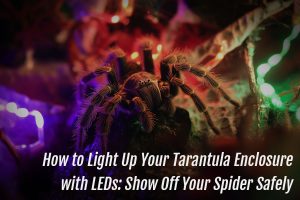The Fascinating World of Arachnid and Insect Molting: Nature’s Exquisite Transformations
Introduction
From the time we are born, we go through numerous changes, growing and evolving as we age. But have you ever stopped to marvel at the extraordinary transformations that occur in the animal kingdom? One of nature’s most awe-inspiring processes is molting, a phenomenon that plays a crucial role in the lives of arachnids and insects. In this blog post, we will embark on a journey to unravel the mysteries behind arachnid and insect molting, exploring the intricate details of their lifecycle and the remarkable adaptations they undergo during this transformative phase.
Understanding Molting
Molting, also known as ecdysis, is the process by which arachnids and insects shed their old exoskeletons, allowing for growth and development. This cyclical process consists of several stages, starting from the egg and progressing through multiple instars until reaching the adult stage. Unlike vertebrates, which grow continuously, arthropods, including arachnids and insects, have a rigid exoskeleton that limits their growth. Hence, molting becomes a necessary mechanism for these creatures to accommodate their expanding bodies.
The Molting Process
A molt is a carefully orchestrated event that follows a specific sequence of events. The pre-molt phase is characterized by various physiological and behavioral changes, including reduced feeding, increased restlessness, and a thickening of the new exoskeleton beneath the old one. Once the arachnid or insect is ready to molt, it will split its old exoskeleton and emerge as a soft, vulnerable creature. During this post-molt stage, the arthropod’s new exoskeleton hardens, and it gradually regains its strength and mobility.
Factors Influencing Molting
While molting is a natural process, several factors influence its timing and success. Environmental triggers, such as temperature, humidity, and photoperiod, play a crucial role in initiating and coordinating molting events. Additionally, proper nutrition is vital for arachnids and insects to develop a strong and healthy exoskeleton. Inadequate nutrition can lead to deformities or failed molts, impacting the survival and reproductive success of these creatures. Furthermore, overcrowding can restrict growth and molting frequency, creating challenges in their life cycle.
Remarkable Adaptations in Arachnids and Insects
Arachnids and insects have evolved incredible adaptations to survive and thrive during the molting process. From specialized structures that aid in shedding the exoskeleton to behaviors that deter predators, these creatures demonstrate remarkable strategies for survival. Some spiders, for instance, produce silk during molting, using it as a safety line in case they fall while emerging from their old exoskeleton. The ability to regenerate lost body parts, such as legs, is another extraordinary adaptation observed in certain arachnids and insects.
Molting in Arachnids
Let’s delve deeper into the world of arachnid molting. Spiders and scorpions, belonging to the class Arachnida, exhibit unique characteristics during the molting process. While spiders typically molt in a head-first manner, scorpions shed their exoskeletons tail-first. The frequency and duration of molting can vary among different arachnid families, with some species molting only a few times in their lifetime. Spider silk, a marvel of nature, plays a significant role during molting, aiding in the construction of egg sacs, retreats, and web-building.
Molting in Insects
The insect world boasts an astonishing diversity of species, each with its distinct molting process. Insects undergo metamorphosis, a transformational journey that can be divided into two main types: holometabolous and hemimetabolous. Holometabolous insects, such as butterflies and beetles, undergo complete metamorphosis, transitioning from egg to larva (caterpillar or grub), pupa (chrysalis or cocoon), and finally emerging as adults. This intricate process involves dramatic changes in body structure, behavior, and diet at each stage. On the other hand, hemimetabolous insects, like grasshoppers and dragonflies, experience an incomplete metamorphosis, where the nymphs resemble miniature versions of the adults and gradually molt into their final form.
The journey from larva to adult in holometabolous insects is a captivating spectacle. Take the example of a butterfly. From a tiny, often overlooked egg, a caterpillar hatches, consuming voraciously and molting several times as it grows. When the caterpillar reaches its final instar, it undergoes a remarkable transformation within the protective casing of a chrysalis or cocoon. Inside, its body breaks down into a soupy mass, reorganizing into the intricate body plan of an adult butterfly. This process, known as histolysis and histogenesis, is a testament to the incredible adaptability and resilience of these creatures.
Conclusion
Arachnid and insect molting offer us a glimpse into the wondrous world of nature’s transformations. From the delicate process of shedding an old exoskeleton to the emergence of a stronger and more resilient creature, molting represents a fundamental aspect of arthropod life cycles. The intricate interplay between environmental cues, nutritional requirements, and the astonishing adaptations these creatures possess highlights the remarkable complexity of their existence.
As we observe arachnids and insects undergoing molting, we gain a deeper appreciation for the intricate mechanisms of growth and adaptation that shape the natural world. By understanding and respecting these processes, we can contribute to the conservation of arthropod species and the preservation of their habitats. Let us marvel at the elegance and ingenuity of arachnid and insect molting, fostering a sense of wonder and respect for the intricate tapestry of life that surrounds us.
Other Helpful Info!
If you found this post helpful, please consider sharing it. It really helps the site in the search algorithm! Thanks!
Do you have inverts and arachnids? Want a fun way of tracking them? Then download Arachnifiles for Android or iOS today! It’s free!
Want to read more helpful blog posts? Click here to view other blog posts!
Want to read more about invertebrate care? Click here to view other care guides!




